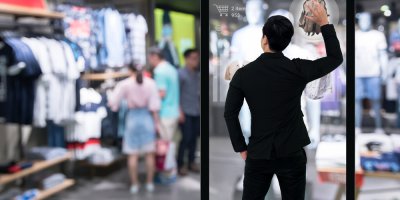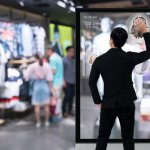
Source: Shutterstock.com
4 key e-commerce trends in the basket for 2018
GLOBAL e-commerce sales are estimated to hit US$2.8 trillion in 2018, with the APAC region alone set to reach US$1.4 trillion by 2020. With a market opportunity this vast comes a hub of innovation and development which is transforming the way consumers buy and receive goods.
So, what is set to drive the world of e-commerce in 2018?
AI-powered virtual assistants
In 2016, the American research firm Gartner predicted that by 2020 around 85 percent of customer interactions would be dealt with without the need for human intervention. 2017 saw the rise of many e-commerce companies providing chatbots as a service. These “virtual robots” provide 24/7 availability to consumers, managing customer service queries as well as making purchase recommendations.
The success of this? Chatbot use is set to rise further in 2018, with retailers really beginning to utilize the full potential of AI-powered chatbots. Customers will become more comfortable interacting with chatbots online, perhaps in the same way they would walk up to a shop assistant to ask a question. Consumer interaction with chatbots is expected to increase from 20 percent in 2017 to 93 percent in 2022.
Delivery innovation
As more consumers are choosing to purchase goods online rather than through the more traditional brick-and-mortar stores, customer expectations concerning efficient and flexible delivery options are rising.
Consumers are expecting quicker delivery times, the option of scheduling a time and easy return policies.
SaleCycle editor-in-chief Graham Charlton told Econsultancy: “I think consumers’ expectations around service will continue to grow. They want fast and convenient delivery options and service, and they want it free, or at least very cheap. The challenge for retailers is to meet these expectations without harming their margins.”
For e-commerce giant Amazon’s Prime service, fast delivery is their biggest selling point.
“We are continually investing in Prime, adding more selection and making delivery faster and more convenient,” Amazon Prime vice-president Greg Greeley said in a statement.
“In fact, in 2016, the last Prime free same-day order from Amazon.com delivered in time for Christmas was ordered at 10.23am on Christmas Eve. The order included Venum Contender Boxing Gloves and was delivered to a Prime member in Richmond, Virginia at 2.42pm – the very same day, for free,” he said.
In 2018, consumers should also expect to see the widespread adoption of drone deliveries.
One of China’s largest retailers, JD.com, sees drones as “especially suitable for rural areas where urban density poses no obstacle to unchallenged drone operations, and where poor transportation infrastructure inhibits efficient courier delivery”.
The drive for dynamic applications
E-retailers are developing more ways in which customers can get the same “hands-on” feeling as in physical stores – but in the comfort of their own homes. Many brands now offer augmented experiences which enable customers to do things such as virtually try on clothes, apply makeup and see how a piece of furniture will look in their living room.

Consumers are expecting increasingly personalized, immersive shopping experiences. Source: Shutterstock.com
BMW’s iVisualizer app, for instance, enables customers to build their own bespoke products and then walk through a virtual car showroom to see how they will look prior to purchase.
This immersive experience allows customers to make much more informed decisions while creating a more enhanced and personalized shopping journey. This is set to increase customer satisfaction rates and decrease the likelihood of returns.
A more personalized experience
The drive for an even more personalized customer experience is set to continue in 2018. E-commerce brands will become increasingly more intelligent in how they use data surrounding customer interests, buying trends and customer profile information in order to offer the right product to the right customer.
A keynote in the e-commerce industry is for brands to continuously improve and innovate in order to stay ahead of competitors and to avoid failing the ever-growing expectation of customers in this digital age.
READ MORE
- Global concerns rise over alleged cyber hacking activities linked to China
- China’s new tech policies challenge Intel and AMD in a shifting landscape
- Saudi Arabia could become the largest player in the AI industry
- How vulnerable are we to cyber threats in the digital age? Here’s what IBM found
- Wise: Revolutionizing travel and finance in Malaysia






